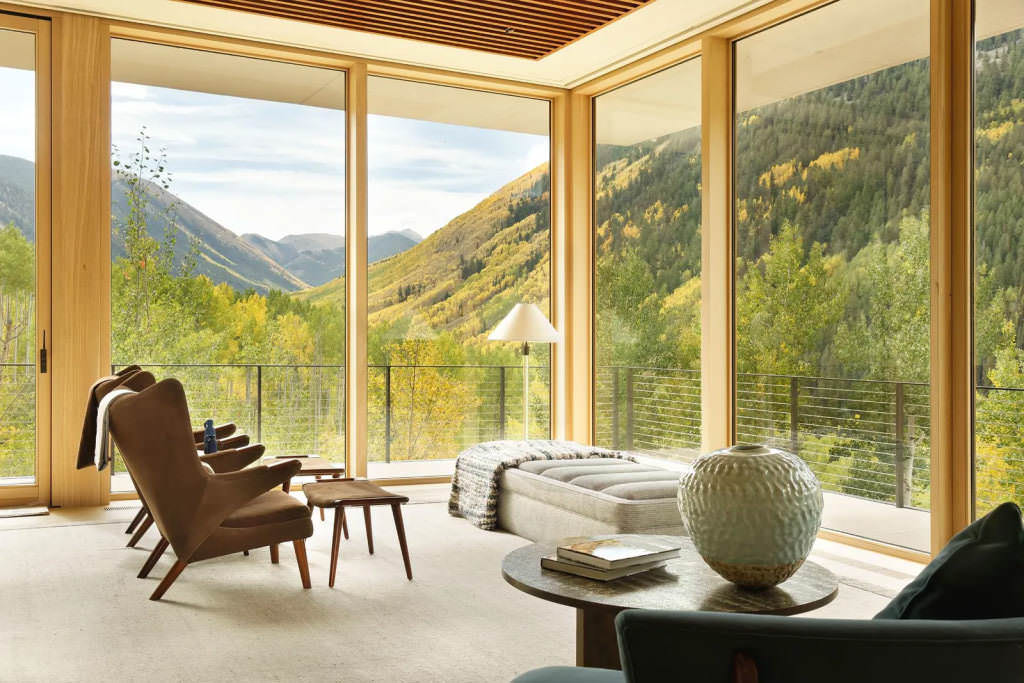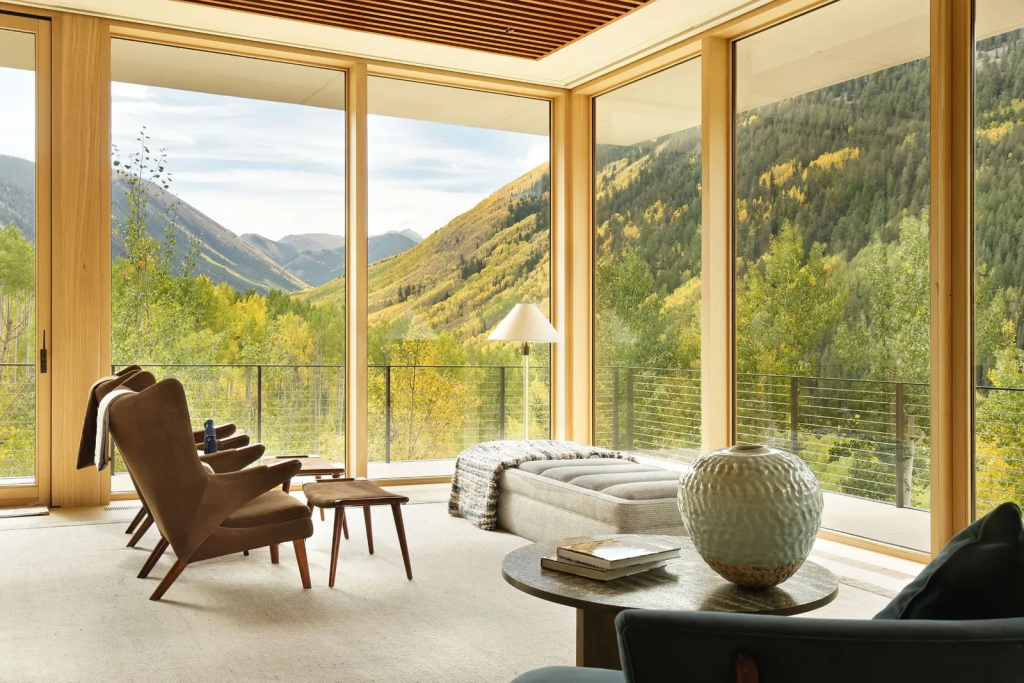 Aspen, Colorado | Lucy Nichols, Aspen Snowmass Sotheby’s International Realty
Aspen, Colorado | Lucy Nichols, Aspen Snowmass Sotheby’s International Realty
The beauty of Japanese and Scandinavian interior design styles are blending together this year. The result? Japandi design, which can be used to transform a house into a welcoming, comforting, and calm sanctuary. While both styles are grounded in minimalism, Japanese design operates on the Zen Buddhist ethos of wabi-sabi, where relaxation and a connection to nature are imperative, while rustic Scandinavian design emphasizes the cozy contentment inspired by hygge. For a foray into Japandi style, experience the benefits of its characteristic soft, nature-inspired hues that encourage simplicity and peace at home.
Soft Neutrals
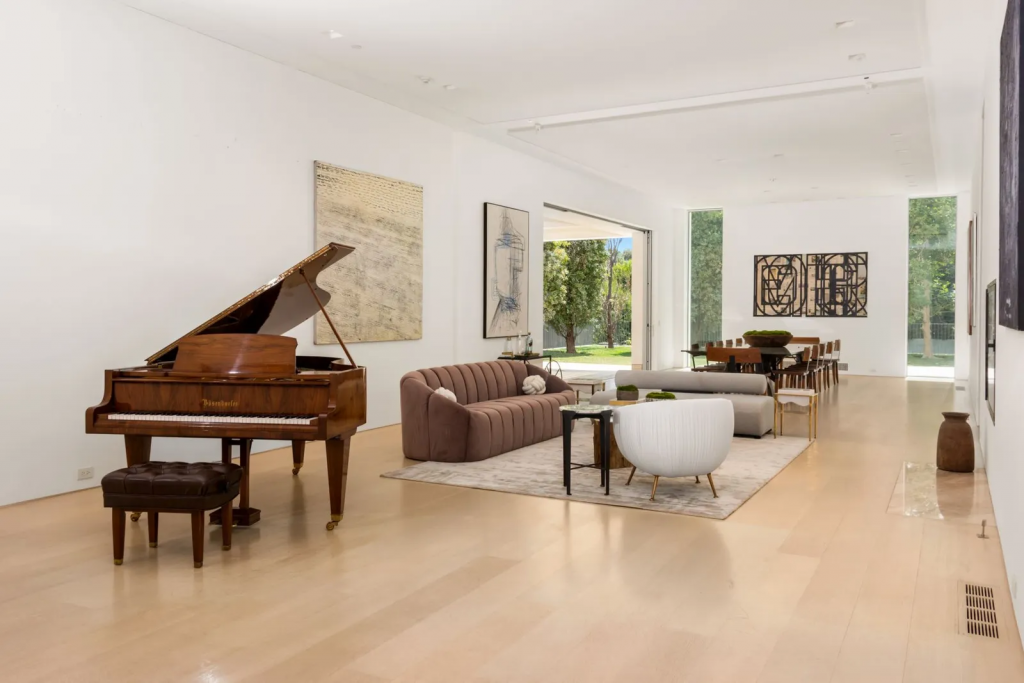 Beverly Hills, California | Victoria Risko, Sotheby’s International Realty – Beverly Hills Brokerage
Beverly Hills, California | Victoria Risko, Sotheby’s International Realty – Beverly Hills Brokerage
A neutral color palette is the basis of Japandi design. Not only do soft shades help cultivate a zen atmosphere at home, but staying true to a neutral scheme also simplifies the process of mixing and matching hues, as they all blend and complement each other harmoniously. When choosing a neutral shade for paint colors, décor, and for textiles like bedding and towels, opt for a warm white or cream as a starting point, and layer in soft greys, blues, and beiges to create a dreamlike space.
Earth Tones
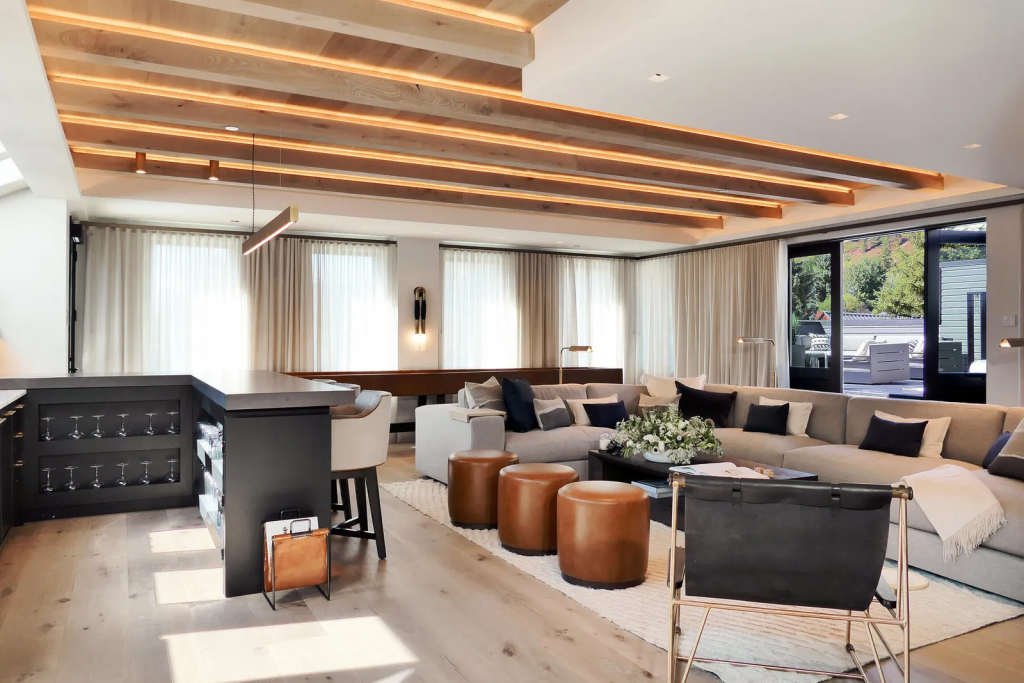 Telluride, Colorado | Lars Carlson, LIV Sotheby’s International Realty
Telluride, Colorado | Lars Carlson, LIV Sotheby’s International Realty
Both the Japanese and Scandinavian traditions value a connection to the natural world. Reflect this love of nature at home by selecting earthy tones reminiscent of distinct landscapes. Muted shades of clay, terracotta, and taupe help add instant feelings of warmth and relaxation when incorporated as decorative elements like rugs and throw pillows, or as accents such as vases and dishware.
Warm Wood Grain
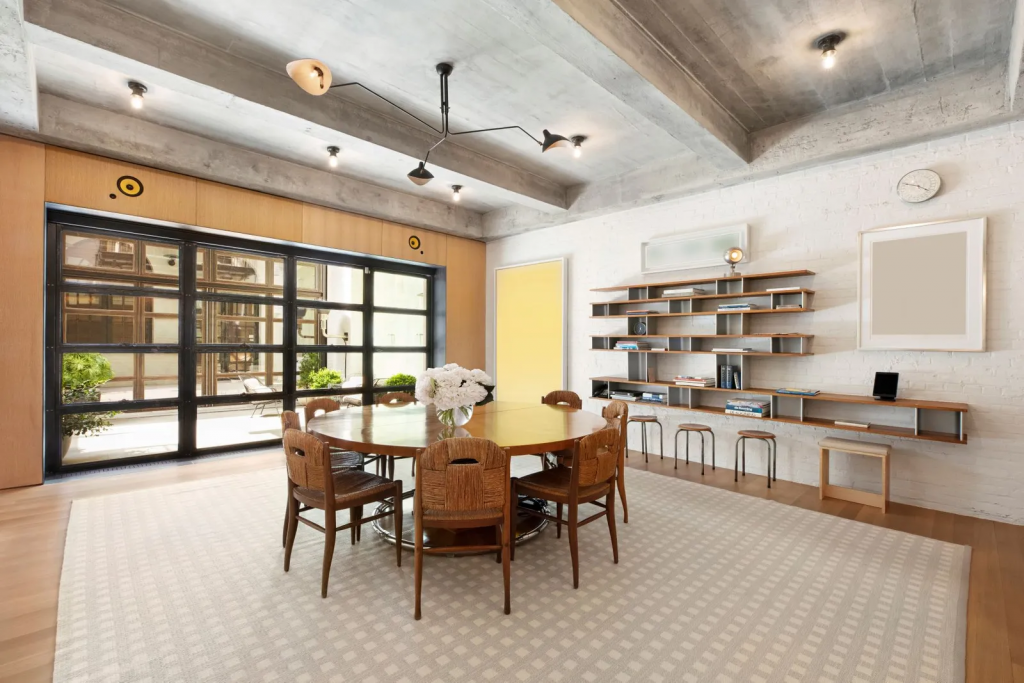 New York, New York | Serena Boardman, Sotheby’s International Realty – East Side Manhattan Brokerage
New York, New York | Serena Boardman, Sotheby’s International Realty – East Side Manhattan Brokerage
The use of wood is paramount to Japandi design. Though traditional Japanese homes tend to feature darker woods such as cedar and red pine while Scandinavian spaces favor light woods like oak and teak, what’s most important is highlighting the wood’s original beauty and texture with all its knots and imperfections. Wood pieces should highlight quality craftsmanship, and can be easily featured as furniture, flooring, or even simple architectural details like wall paneling, ceiling beams, and shelving to bring organic texture to your surroundings.
Muted Green
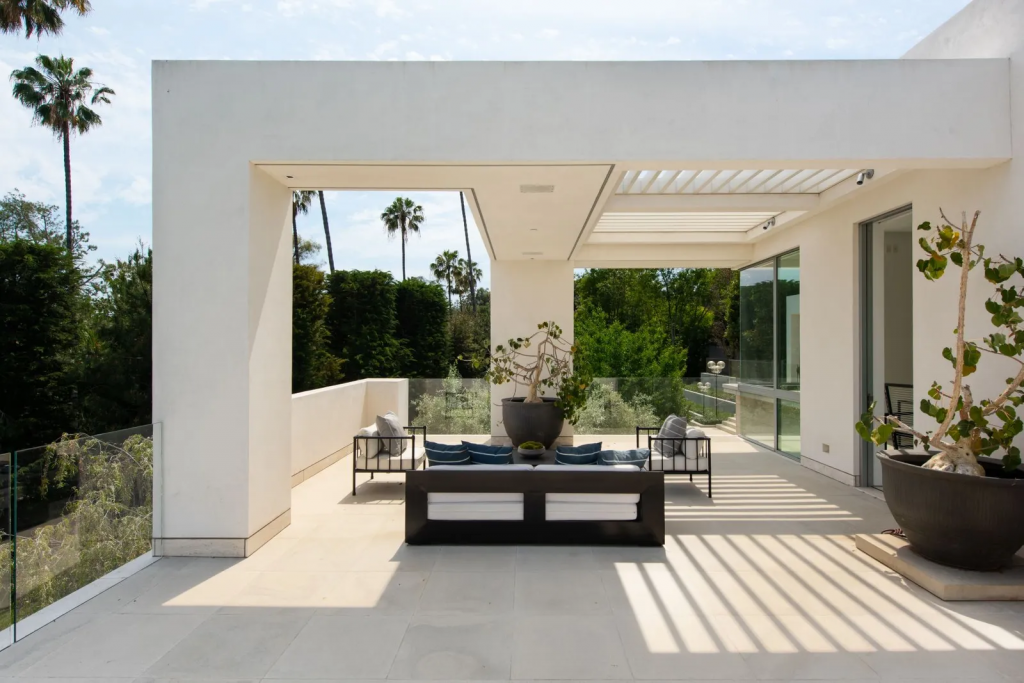 Beverly Hills, California | Victoria Risko, Sotheby’s International Realty – Beverly Hills Brokerage
Beverly Hills, California | Victoria Risko, Sotheby’s International Realty – Beverly Hills Brokerage
To further honor nature, extend the calming and healing effects of the outdoors into the home through organic shades of green. Soft sage or green-grey paint can add a subtle energy to living rooms and bathrooms, while houseplants offer their own invigorating benefits. From Japanese plants like bonsai and moss-wrapped kokedamas, to more common succulents and ferns, adding hints of greenery indoors helps strengthen a home’s connection to nature—just keep in mind the Japandi principle of minimalism and make sure not to overwhelm any particular space with plants.
Dark Contrast
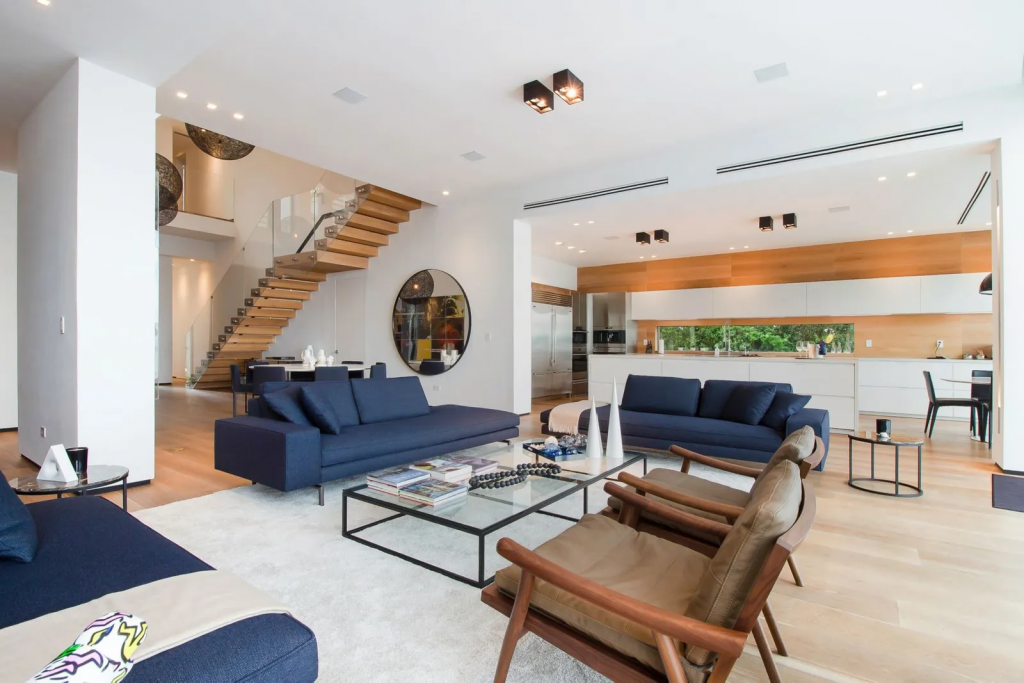 Miami, Florida | Roy Benmeir & Rachel Benmeir, ONE Sotheby’s International Realty
Miami, Florida | Roy Benmeir & Rachel Benmeir, ONE Sotheby’s International Realty
Although dark colors may seem counterintuitive to the soft and light aesthetic of Japandi style, like life itself, it’s important to strike a balance—without the darkness, we’d be less attuned to the light. To effectively execute contrast at home, use granite, indigo, and even black hues—sparingly—to complement the established neutral environment and add a sense of grounding. Interior doors, exterior siding, accent furniture, and kitchen cabinetry are excellent places to add a touch of drama with these colors.
Japandi design is an antidote to busy modern life. Combining the best of Scandinavian earthiness and Japanese elegance, it’s an aesthetic largely inspired by a neutral color palette that may be subtle, yet is becoming increasingly appealing for its soothing effects. By incorporating these classic Japandi colors at home through painting, replacing furniture with wood pieces, or adding architectural detail, the simplicity of Japandi style is easily achievable through hue.
This article originally appeared at https://www.sothebysrealty.com/extraordinary-living-blog/the-colors-of-japandi-design




 Facebook
Facebook
 X
X
 Pinterest
Pinterest
 Copy Link
Copy Link
